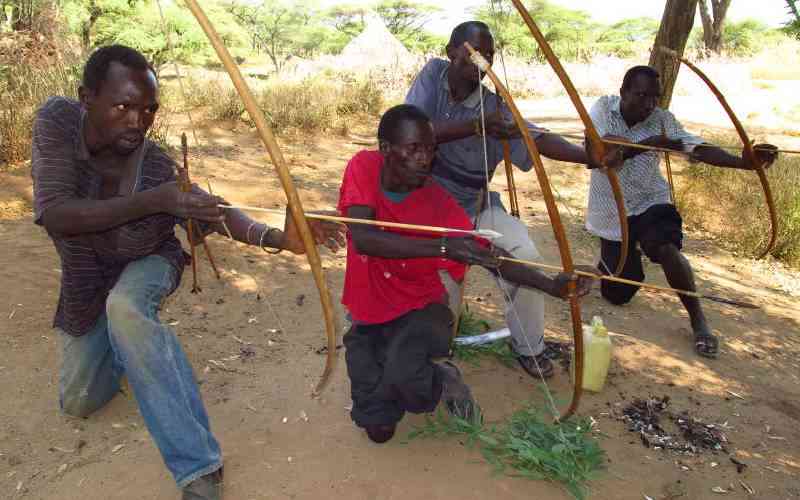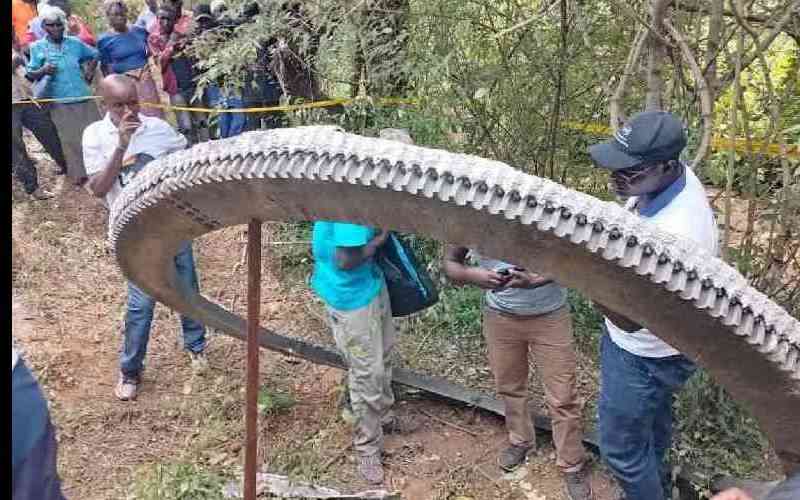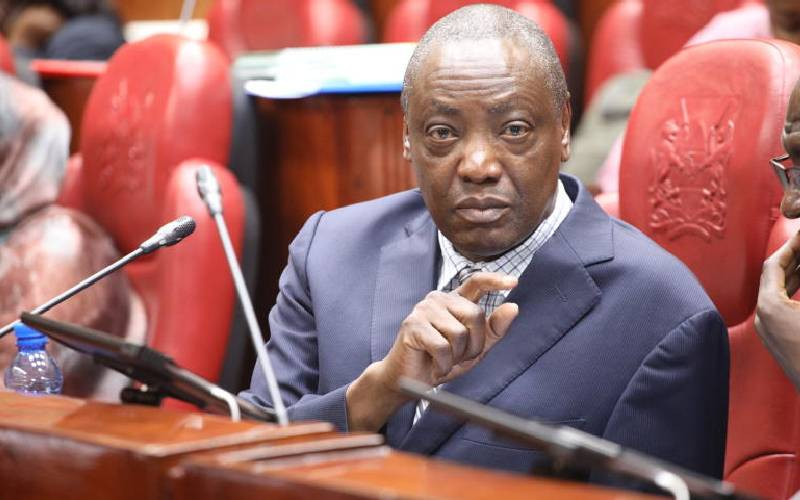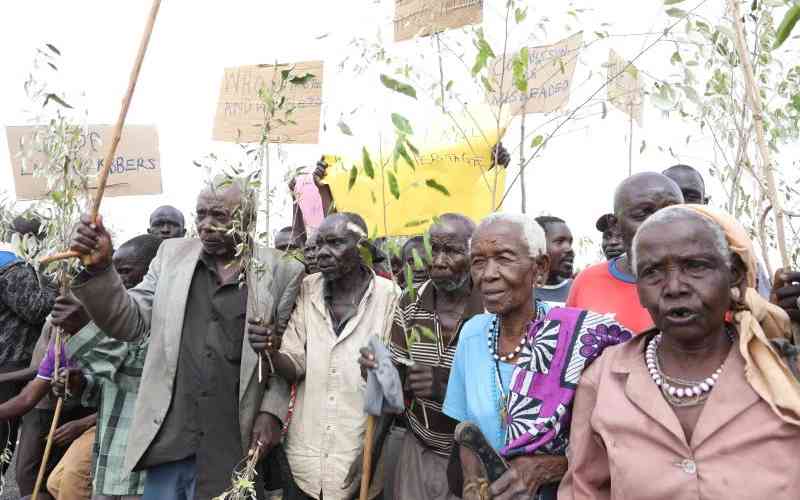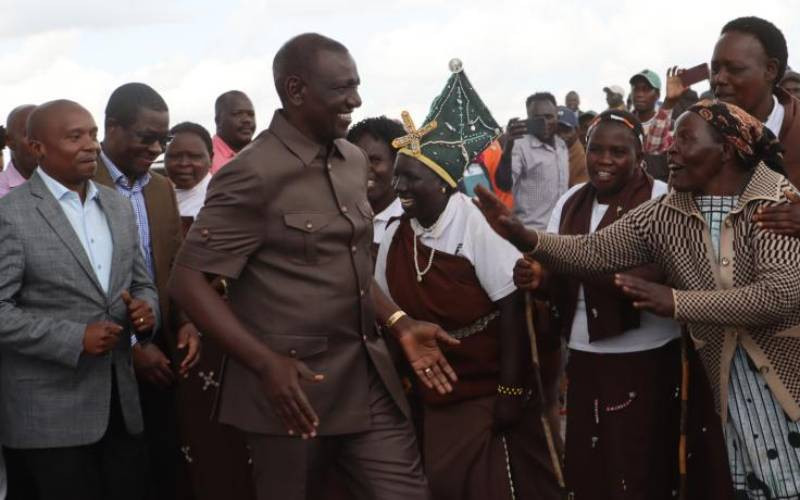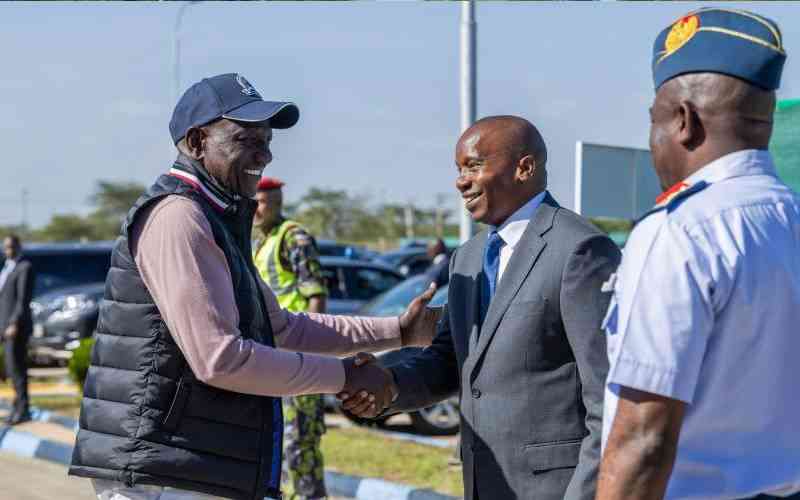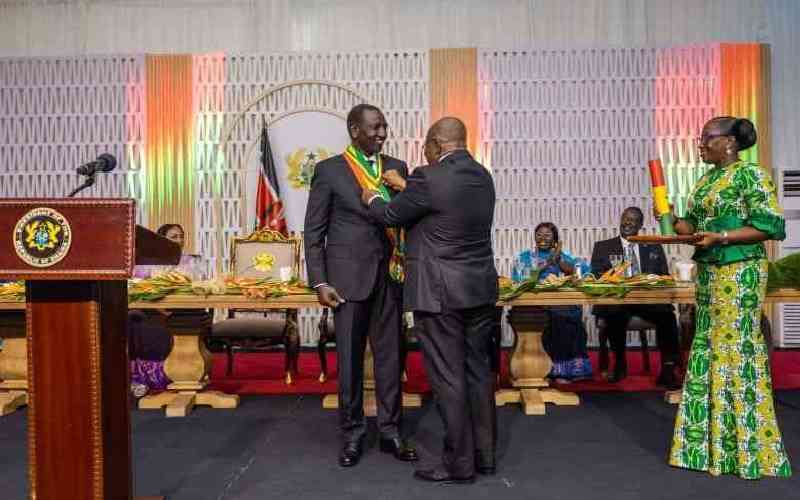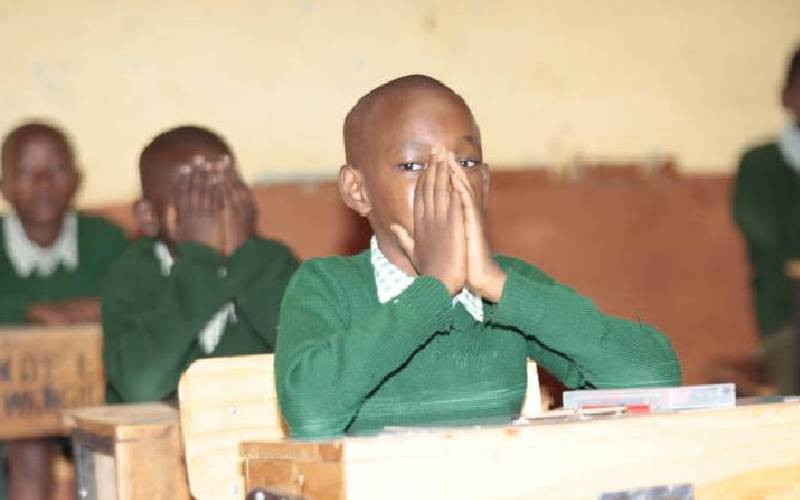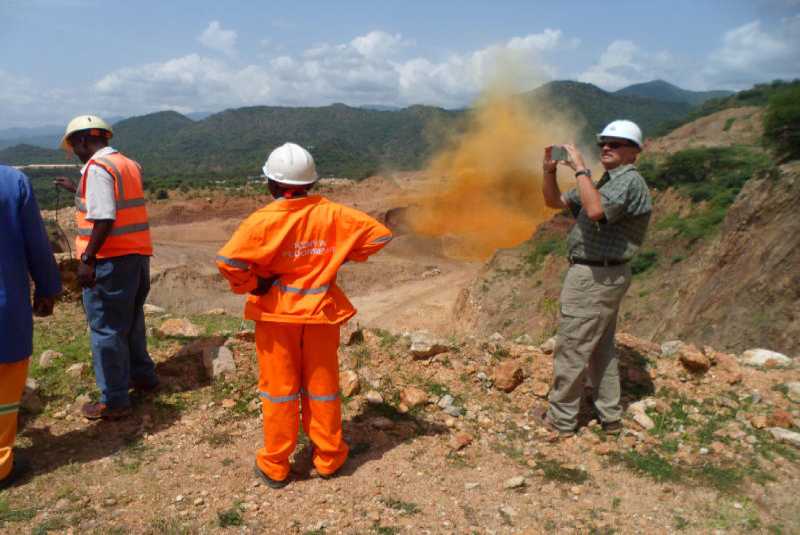
Nathaniel Tumo was astounded when an excavator arrived at his farm in western Kenya four years ago and started digging for minerals, almost bringing down his house.
“They started blasting a few metres away and the stones fell on my house,” said Tumo, 62, his breath laboured from living alongside the open pit, with its dust, noise and falling rocks.
Kenya Fluorspar Company (KFC) turned two acres of Tumo’s land, which he inherited from his father, into an open-cast mine but did not pay compensation, saying the government had acquired the land in the 1970s, decades before the firm’s involvement.
The company was the largest employer in the Kerio Valley, with money trickling down to many local businesses, and it also spent millions of shillings improving local schools, paying scholarships and providing healthcare.
“The compensation has nothing to do with us. The lease area was taken by the government many years ago before even Kenya Fluorspar Company existed,” Andre DeSimone, a director at KFC, told the Thomson Reuters Foundation by phone.
The firm’s 21-year mining lease expired in March, he added.
The abandoned pits have filled with rain, marked with danger signs to deter locals from entering the area.
The government says it will compensate thousands of Kerio Valley evictees - most of whom lost their land soon after 1971 when a state-owned fluorspar mining company was set up - but efforts have become bogged down in disputes over details.
“We are looking at paying them for their land,” said John Omenge, principal secretary at Kenya’s mining ministry.
“We don’t have alternative land to give them.”
The battle over compensation in the Kerio Valley illustrates global struggles to balance the need for economic development with the land rights of local people, who lack formal titles but have become increasingly vocal.
The East African nation has deposits of titanium, gold and coal, as well as oil and gas reserves, often in remote regions where the country’s poorest live, but experts say few have reaped the rewards from mining.
Kenya launched an ambitious industrialisation plan after the end of British rule in 1963, acquiring vast tracts of land for mining, according to the National Land Commission (NLC), an independent government body that arbitrates land disputes.
While compensation and resettlement were limited, few protested in the early years of independence because the projects were seen to be for the public good, said local activist David Seurei of Natural Resources Alliance of Kenya.
Stay informed. Subscribe to our newsletter
About 1,400 families were evicted from the fluorspar-rich 9,000-acre (3,642-hectare) site in the 1970s, the group says.
Omenge of the mining ministry said official documents show that the government did pay some compensation in 1975 but it is unclear who received the money.
PARALYSED
Demands for compensation have escalated since KFC halted operations in 2016 due to a global slump in the price of fluorspar, used in the manufacture of steel and aluminium.
The pull out of KFC - which said it experienced three years of losses before laying off all of its staff - has devastated the local economy, forcing many businesses to close, from food retailers to money transfer services.
About 1 km from the abandoned crushing plant, the deserted Kimwarer shopping centre was dotted with closed shops and stalled trucks. Young men played board games under a tree.
“When the company stopped mining, our vehicles also stopped moving,” said Musa Wendot, whose three trucks used to transport blasted rocks from the mines to the plant and railway, which ferried them to the coast for export.
“We had loans with banks which we are struggling to pay. Some of our trucks have been towed (by creditors).”
Numerous KFC-funded projects that benefitted both staff and the impoverished community, including schools, a medical centre and water services, have become “paralysed” since the mining company left, said Philemon Cheruiyot, a local activist.
Tall grass surrounded a poorly-stocked clinic within KFC’s deserted staff quarters, while a male nurse sat on a bench fidgeting with his phone.
“Mining doesn’t help if it doesn’t give back to the community,” said Cheruiyot, secretary of the Kimarer Sugutek Fluorspar Community Trust, a group pushing for compensation.
He is also lobbying for the community to be given shares in any new company that comes to mine in the valley.
Kenya’s 2016 Mining Act provides for communities in areas where mining takes place to receive 10 percent of the royalties, and for firms to list 20 percent of their equity on the Nairobi Stock Exchange.
In the meantime, hopes are focused on a committee of mining and lands ministry officials which recommended in May that the government pay Kerio Valley evictees 1 billion shillings ($9.9 million) in compensation, said NLC commissioner Silas Kinoti.
But further action has been delayed by disagreements among community members over whether to ask for cash or alternative land, he said.
At the Kimwarer shopping centre, some locals said they wanted 3 million shillings per acre, 12 times more than the government’s offer.
“The committee looked into these disputes and will give a report,” said Kinoti. “We can then ... make proper compensations.”
The arrest in August of the head of the NLC - the body mandated to oversee compensation - on corruption charges has also caused delays, the ministry’s Omenge said.
Standing outside his house, a few metres from the pit, Tumo said he hopes to be given an alternative piece of land.
“If I get land elsewhere, I will go,” he said, adding that no specific promise for land or cash had been made to him yet.
"We pray every night with my children that we get compensated so that we can find somewhere else to go."
 The Standard Group Plc is a
multi-media organization with investments in media platforms spanning newspaper
print operations, television, radio broadcasting, digital and online services. The
Standard Group is recognized as a leading multi-media house in Kenya with a key
influence in matters of national and international interest.
The Standard Group Plc is a
multi-media organization with investments in media platforms spanning newspaper
print operations, television, radio broadcasting, digital and online services. The
Standard Group is recognized as a leading multi-media house in Kenya with a key
influence in matters of national and international interest.
 The Standard Group Plc is a
multi-media organization with investments in media platforms spanning newspaper
print operations, television, radio broadcasting, digital and online services. The
Standard Group is recognized as a leading multi-media house in Kenya with a key
influence in matters of national and international interest.
The Standard Group Plc is a
multi-media organization with investments in media platforms spanning newspaper
print operations, television, radio broadcasting, digital and online services. The
Standard Group is recognized as a leading multi-media house in Kenya with a key
influence in matters of national and international interest.


